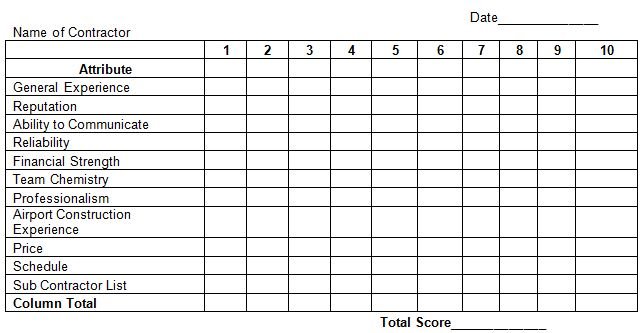FBO Best Practices Series #1: FBO Accident? Don’t be Sorry!
/
By John L. Enticknap and Ron R. Jackson, Aviation Business Strategies Group - ABSGgroup.com
Welcome to our new blog series on FBO Best Practices. With each blog post in this series, we’ll discuss “Best Practices” in running an efficient and effective FBO operation. Also, please join John and Ron for the next NATA FBO Success Seminar, March 24-25, 2014, in Las Vegas.
Best Practice #1: Never say you’re sorry to a customer if you have an accident on the ramp or in the hangar of your FBO.
We know this sounds a bit callous and goes against everything society has taught us regarding common courtesy, but here’s why it’s important to keep emotion out the equation and treat an accident as an event.
The fact is an accident can potentially involve legal action. Therefore, statements made that are apologetic in nature could possibly be used as part of a lawsuit to show potential admittance to wrong doing on the part of the FBO.
At least, that’s our experience. However, before we go further with this post, here is our disclaimer: We are not attorneys. Please consult an attorney for legal advice.
As mentioned, the natural reaction to an accident is for an employee to offer an apology and once that happens, it often doesn’t stop there, especially if the accident involves the grounding of an aircraft. We’ve seen and heard of FBO employees going as far as immediately offering a charter aircraft and to fix the aircraft that’s damaged.
Further, no statements should be made regarding how the accident happened or inferences of assuming responsibility. And the restriction is not just for verbal statements. Employees should not use cellular phones to take photos or contact anyone regarding the accident especially texting or the use of social media such as Facebook or Twitter.
When substantial losses or lawsuits are anticipated, the prudent thing to do is not to talk about it to anyone other than a lawyer or insurance broker. This is a hard position to take when things go wrong at an FBO. Your customers are unhappy, your employees are unhappy and perhaps even under duress.
FBO owners and managers have to balance this uncomfortable situation and do the best for all affected parties. This includes protecting the business from potential lawsuits and unnecessary expenses while maintaining a trustworthy enterprise.
So what is the protocol in dealing with an accident? Here are some general guidelines:
- If there are injuries, get medical help immediately and make sure all are out of danger.
- Employee, without delay, reports the accident to the supervisor.
- Supervisor contacts FBO owner/manager.
- Insurance broker is contacted and deals directly with the customer.
- If there is a risk management department, it should be contacted to manage the customer and their issues.
- Help the customer with such items as rental car and hotel arrangements. Note: The customer should pay for the rental car, hotel or other transportation, not the FBO.
- Be an empathetic listener for the customer. Do not get defensive. Act with understanding and seek to ease stress from the circumstances.
- Let investigators do their job. Liability needs to be investigated in a detailed investigation of the facts.
- Do not email or hold casual conversations on the incident. Investigative reports and details should be kept confidential between the FBO ownership and insurance brokers.
- All statements that have to be issued should be done so after consulting an attorney and/or insurance brokers.
Once again, please remember we are not lawyers, so consult with your attorney if you have an accident. Our advice is to be careful when an accident occurs and do not automatically make statements that assume the FBO is at fault … it’s not always the case. And above all, put your procedure in writing and educate your employees regarding the procedure. Keep a copy in your Standard Operating Procedures (SOP) manual as well as your Customer Service Manual.
Tell us what you think—we appreciate your comments and thoughts. Also Like us by clicking the link below.
Send us an email to Ron@thejacksongroup.biz or jenticknap@bellsouth.net and visit us online at www.ABSGgroup.com. Also, learn more about negotiating airport leases, fuel supply agreements and exceptional customer service at our next NATA sponsored FBO Success Seminar to be held March 24-25, 2014, in Las Vegas. Click here to register.
About the bloggers:
John Enticknap
John Enticknap founded Aviation Business Strategies Group in 2006 following a distinguished career in aviation fueling and FBO management, including President of Mercury Air Centers network of 21 FBO locations. He is an ATP and CFI rated pilot with more than 7,800 flight hours and is the author of “10 Steps to Building a Profitable FBO”. John developed NATA’s acclaimed FBO Success Seminar Series and writes an industry blog for AcUKwikAlert.com titled: The FBO Connection.
Ron Jackson
Ron Jackson is Co-Founder of Aviation Business Strategies Group and President of The Jackson Group, a PR agency specializing in FBO marketing and CSR training. He has held management positions with Cessna Aircraft and Bozell Advertising and is the author of “Mission Marketing: Creating Brand Value” and co-author of “Don’t Forget the Cheese!” the ultimate FBO Customer Service Experience. Ron co-developed NATA’s acclaimed FBO Success Seminar Series and writes an industry blog for AcUKwikAlert.com titled: The FBO Connection.
























